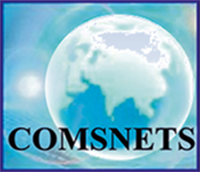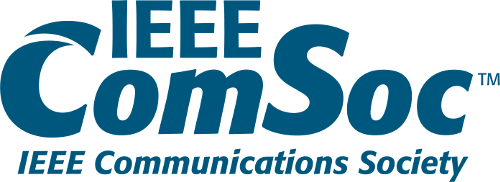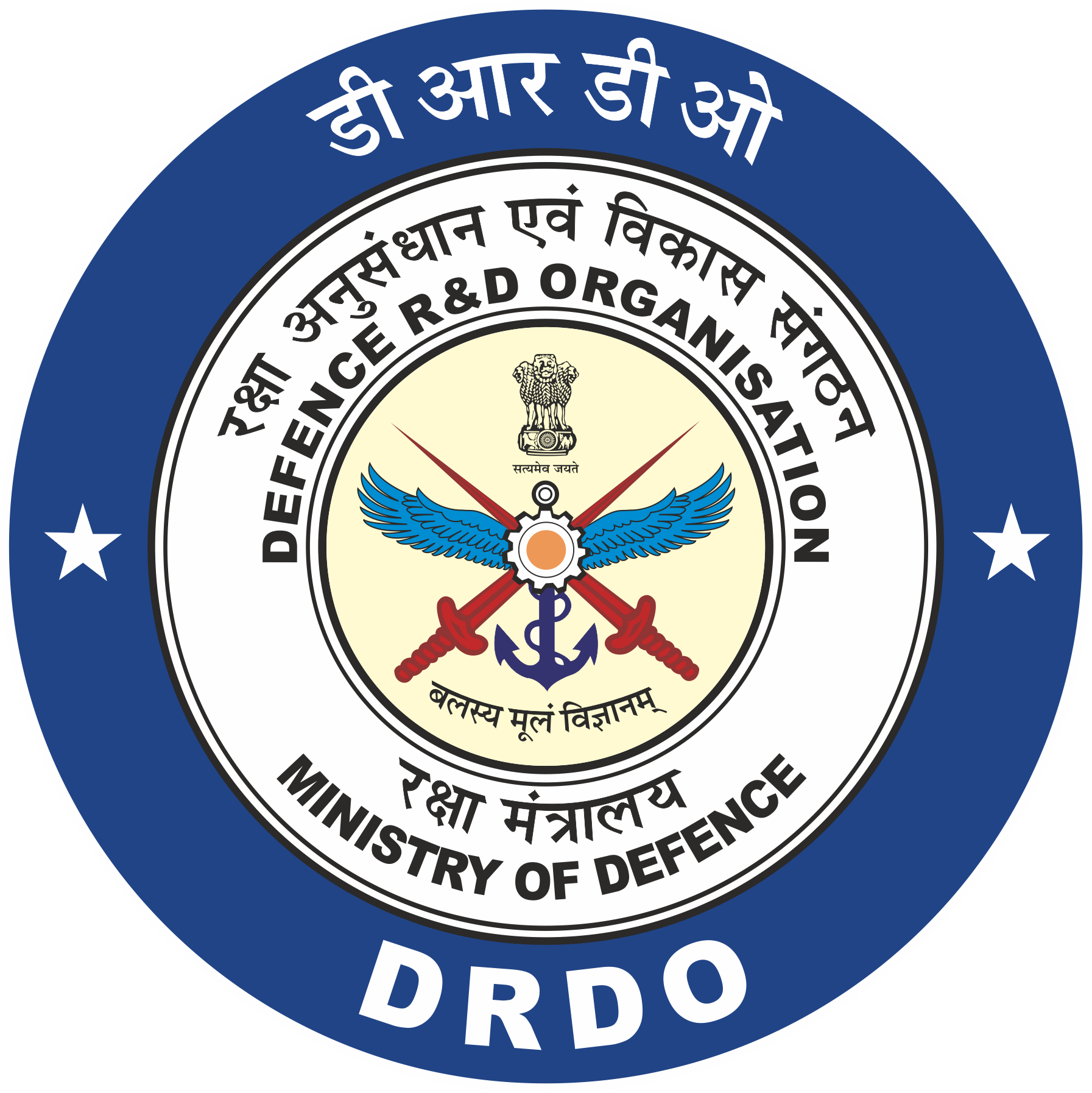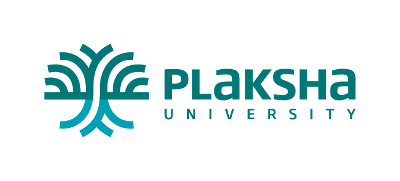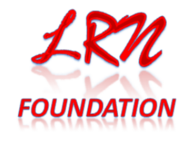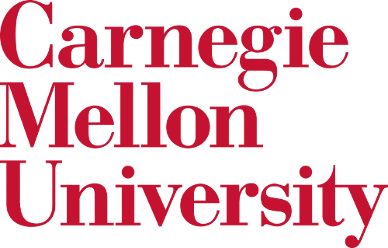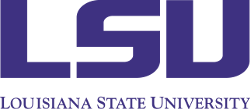Poster Session
The COMSNETS 2022 Poster Session is a forum to showcase preliminary/ongoing work in the area of computer networking and communications. COMSNETS being the premier venue for networking research in India and abroad, attracts a lot of researchers from both academia and industry. Therefore, poster presenters will benefit from lively discussions and critical feedback on their work in progress. In addition, all submissions will get detailed reviews from the poster reviewing committee.
Accepted posters will be published in the conference proceedings.
Topics of Interest
COMSNETS takes a broad view of research in communication systems and networking. The topics of interest for the poster submissions include (but are not limited to) the following:
- 5G and wireless broadband networks
- Technologies for 6-100 GHz spectrum
- Edge and fog computing/networking
- Studies on testbeds and large scale experimental platforms
- Long-range/Low-power wide-area wireless networking
- Connected unmanned aerial/terrestrial/underwater systems
- CubeSats / Satellite Networking
- WLAN, RFID and NFC
- Visible light communications
- Heterogeneous networks (HetNets)
- Cognitive radio & white-space networking
- Economics of networks
- Energy-efficient communications
- Cloud computing
- Enterprise, data center, & storage-area networks
- Internet architecture and protocols, Internet science & emergent behavior
- Mobility and location management
- Mobile sensing
- Traffic analysis and engineering
- Internet of Things (IoT)
- Caching & content delivery systems
- Information/Content centric networks (ICN)
- Network management and operations
- Network security and privacy
- Trusted computing
- Network science
- SDN/NFV and Network Programmability
- Internet Measurement and Modeling
- Networks for smarter energy & sustainability
- Vehicular Networks & Intelligent Transportation
- Smart Grid communications & networking
- Machine Learning and AI in Networking
- Big Data/IoT Analytics in Networking
- Blockchain and Distributed Ledger
What to submit:
Poster submissions can be a maximum of 4 pages + 1 page for references. All submissions should have at least three pages of technical content. It should contain the motivation for the research problem, the solution approach, and analytical or empirical results, if any.The submission must use the same template as that of the conference..
Submissions which do not adhere to the conference template will be rejected without review. All submissions must be in PDF format.
Where to submit:
Posters and additional documents can be submitted through EDAS at https://www.edas.info/newPaper.php?c=28674.
Important Dates:
| , |
|
Accepted Posters
Please Note: At least one author per accepted paper (Main conference, Poster, Workshops, Demo) must register at the full rate, i.e., at Regular IEEE/ACM member rate, or at non-member rate even if he/she happens to be a student. In the case of an accepted paper with exclusively student authors (i.e., all authors are full-time students and no other co-authors), registration at the student rate is permissible.
Camera ready papers are due by Dec 15, 2021 (HARD DEADLINE). Please adhere to the instructions given on the website (https://www.comsnets.org/camera_ready.html) in preparing the camera ready manuscript.
Poster Format
Please prepare your posters in A0 paper size in portrait/landscape mode. You will need to bring a printed copy of your poster to the poster session. We will arrange for the necessary support system (poster stands, clips etc.). Please ensure to make your poster visually appealing. For instance, merely replicating the text of your abstract onto the poster is a bad idea. Instead, strive to have a continuous flow of ideas through numbers, figures, diagrams and graphs.
Poster prizes
Based on feedback from a panel of judges during the poster session, the three best posters will be awarded certificates. The awards will be presented at the conference banquet on Thursday, January 6th.
Physical Session [5th Jan 2022, 1 PM - 3:30 PM]
The Physical Session will be held on 5th Jan 2022 from 1 PM to 3:30 PM IST at the hotel Poolside. The participants will be provided with all necessary materials to display the posters. All participants should report at the venue 30 minutes before the session to set up their posters.
A physical Lightning Talk session where a two-minute video of all physical posters will be played at 1 PM for physical attendees at (Venue: Sigma 1). The lightning talks will also be available to be viewed online: https://youtube.com/playlist?list=PLz_DSEq_FVa6VQks1wfdap9ChrGzXal1D
https://www.youtube.com/playlist?list=PLz_DSEq_FVa43G-A33qrSq94npQXfgMZe
A five-minute video of all the physical posters will be played one after the other on AirMeet during this time for the virtual attendees. Although a live Q&A session will not be available, virtual attendees can post their questions, which the physical presenters will answer later.
The lightning talk and five-minute video of the physical posters will be played in this order:
- Accelerating PUF-based UAV Authentication Protocols Using Programmable Switch
- An LTIRS Model for Influence Diffusion Process
- Automated Detection of Cells with Static Interference for Nominal Power Parameter Recommendation
- CSI-based Device-Free Joint Activity Recognition and Localization using Siamese Networks
- Decentralized Identity and Access Management of Cloud for Security as a Service
- Enhanced User Grouping and Pairing Scheme for CoMP-NOMA-based Cellular Networks
- Exploiting Side Information for Intelligent and Reconfigurable PHY: Experiments on LTE Transceivers
- Frequency-aware Time Series Forecasting, Anomaly Detection, Classification and Granger Causality
- HS-PARAM: Hive-Spark Parameterization Framework to Optimize Ingestion and Storage of Heterogeneous Data
- IEEE 802.15.4e-TSCH MAC Stack Extensions to GNU Radio
- SoftHealth: Softwarized 5G-Driven Network Slicing for Real-time e-Healthcare Applications using ML
- Prediction of Throughput Degradation from Trouble Frequencies, given Environmental Unknowns
Virtual Session [6th Jan 2022, 1 PM - 4 PM]
The Virtual Session will be held on 6th Jan 2022 from 1 PM to 4 PM IST in Indian Affairs for Physical attendees. Virtual attendees will be able to attend the session online through AirMeet. Every poster will be given an 8-minute slot, where 5 minutes will be for the video and 3 minutes for Q&A. The poster presenters are requested to be available online during this session for the Live Q&A. The presenters should stay in the audience during this time and raise their hand when their poster is being played. The host will call them on the virtual stage such that they can respond to any questions. The presentation will follow the below order:
- A Platform To Enable Algorithms As Service Model Aimed at Digital Health Service Delivery
- A-REaLiSTIQ-ViBe: Entangling Encoding and Transport to Improve Live Video Experience
- Defer No Time, Delays have Dangerous Ends: Slow HTTP/2 DoS Attacks into the Wild
- Analysis of Queuing Delay in LTE System: Model and Validation
- Codeword Length Estimation of LDPC Codes with Limited Data
- AutoML Models for Wireless Signals Classification and their effectiveness against Adversarial Attacks
- Channel modelling of VVLC system
- Classification of Adversities in Urban Deployment of Internet-of-Things
- Collaborative adversary nodes learning on the logs of IoT devices in an IoT network
- Design and Implementation for a Duplex Visible Light Communication Link
- GDPR-Compliant Data Management Protocol: A Scalable Solution
- On the Performance of an Improved Energy Detector over Shadow Fading Channels for Vehicular Networks
- PC-based Intelligent Traffic Monitoring System with Real-time Analysis for Smart Cities
- Performance Analysis of HARQ in LTE Networks
- Wavelet-based Non-Reconstructive Compressed Spectrum Sensing against Non-Gaussian Noise
- Towards an Open-Source NFV Management and Orchestration Framework
- Energy and Delay Efficient Intelligent Release Assistant Indication Scheme for NB-IoT
- When Is Multiple Access Beneficial? Analysing Single-User vs. Multi-User Performance in 802.11ax
Top Physical Posters Session [7th Jan 2022, 4 PM - 5 PM]
Based on the scores provided by the judges, the top ten physical posters will be presented during this special physical session on 7th Jan 2022, 4 PM - 5 PM at the hotel Poolside. The list will be announced before the banquet on 6th Jan 2022.
- Design and Implementation for a Duplex Visible Light Communication Link
Anjali Gupta (Indian Institute of Technology, Delhi, India); Vaibhav Singh and Mayank Gautam (Indian Institute of Technology Delhi, India); Abhishek Dixit (Indian Institute of Technology Delhi & IBBT, India) - Defer No Time, Delays have Dangerous Ends: Slow HTTP/2 DoS Attacks into the Wild
Nikhil Tripathi (Indian Institute of Information Technology, Sri City, India); Abhijith Kalayil Shaji (Otto Von Guericke University, Germany) - IEEE 802.15.4e-TSCH MAC Stack Extensions to GNU Radio
Ipsita Sanyal and Prabhakar Venkata T. (Indian Institute of Science, India) - Analysis of Queuing Delay in LTE System: Model and Validation
Megha Sahu (Indian Institute of Technology Bhilai, India); Arzad Kherani (Indian Institute of Technology, Bhilai, India) - Classification of Adversities in Urban Deployment of Internet-of-Things
Chandra Shekhar and Sudipta Saha (Indian Institute of Technology Bhubaneswar, India) - Automated Detection of Cells with Static Interference for Nominal Power Parameter Recommendation
Arthur Brisebois (GAIA, Ericsson, US); Serene Banerjee (GAIA, Ericsson, India); Shweta Ramesh (GAIA, Ericsson, India); Bhavika Jalli (GAIA, Ericsson, US); Philipp Frank, Raul Martin and Jaime Membrive (BMAS-NDO, Spain) - Frequency-aware Time Series Forecasting, Anomaly Detection, Classification and Granger Causality
Serene Banerjee (GAIA, Ericsson, India); Raul Martin and Abel Pardo (BMAS-NDO, Spain) - SoftHealth: Softwarized 5G-Driven Network Slicing for Real-time e-Healthcare Applications using ML
Deborsi Basu (Indian Institute of Technology, Kharagpur & IEEE Student Member, India); Vikram Krishnakumar (SASTRA Deemed University, Thanjavur, Tamil Nadu & IEEE, IEEE ComSoc, India); Uttam Ghosh (Vanderbilt University, USA); Raja Datta (Indian Institute of Technology Kharagpur, India) - HS-PARAM: Hive-Spark Parameterization Framework to Optimize Ingestion and Storage of Heterogeneous Data
Apurva Kulkarni (International Institute of Information Technology Bangalore, India); Chandrashekar Ramanathan (International Institute of Information Technology, Bangalore, India) - Collaborative adversary nodes learning on the logs of IoT devices in an IoT network
Sandhya Aneja, Melanie Xuan En and Nagender Aneja (Universiti Brunei Darussalam, Brunei Darussalam) - Prediction of Throughput Degradation from Trouble Frequencies, given Environmental Unknowns
Joy Bose (Ericsson, Bangalore, India); Ranjani G. (Ericsson, India); Serene Banerjee (GAIA, Ericsson, India); Venkatesh Umaashankar (Ericsson, India) - A Platform To Enable Algorithms As Service Model Aimed at Digital Health Service Delivery
Karan Bhavsar (Platform Architect & TCS Research & Innovation, India); Harsh Vishwakarma (Team lead, India); Bhaskar Pawar (Tata Consultancy Services Ltd., India); Sujit Shinde (Tata Consultancy Services Limited, India); Sanjay Madhukar Kimbahune (Tata Consultancy Services Ltd., India); Avik Ghose (Tata Consultancy Services, India) - Energy and Delay Efficient Intelligent Release Assistant Indication Scheme for NB-IoT
Prashanth Lingala (Indian Institute of Technology Hyderabad, India & Honeywell, India); Pavan Reddy M (Indian Institute of Technology Hyderabad, India); SaiDhiraj Amuru and Kiran Kuchi (IIT Hyderabad, India) - Towards an Open-Source NFV Management and Orchestration Framework
Karamjeet Kaur (Panjab University, India); Veenu Mangat (Panjab University Chandigarh, India); Krishan Kumar (Panjab University, India) - When Is Multiple Access Beneficial? Analysing Single-User vs. Multi-User Performance in 802.11ax
Harshal Dev (IIIT Delhi, India); Hritik Goel (Indraprastha Institute of Information Technology, India); Arani Bhattacharya (IIIT-Delhi, India); Mukulika Maity (IIIT Delhi, India) - GDPR-Compliant Data Management Protocol: A Scalable Solution
Mou Dutta (Indian Institute of Information Technology, Guwahati, India); Subhasish Dhal (Indian Institute of Information Technology Guwahati, India) - CSI-based Device-Free Joint Activity Recognition and Localization using Siamese Networks
Mohammad Zeeshan, Ankur Pandey and Sudhir Kumar (Indian Institute of Technology Patna, India) - AutoML Models for Wireless Signals Classification and their effectiveness against Adversarial Attacks
Krishna Srikar Durbha (IITH, India); SaiDhiraj Amuru (IIT Hyderabad, India) - Codeword Length Estimation of LDPC Codes with Limited Data
Dinesh Ambati (Quantile Analytics Pvt. Ltd, India); Swaminathan Ramabadran (Indian Institute of Technology Indore, India) - On the Performance of an Improved Energy Detector over Shadow Fading Channels for Vehicular Networks
Sagar Kavaiya (School of Engineering and Applied Science, Ahmedaad University, India); Dhaval Karshanbhai Patel (School of Engineering and Applied Science-Ahmedabad University, India) - A-REaLiSTIQ-ViBe: Entangling Encoding and Transport to Improve Live Video Experience
Abhijan Bhattacharyya (Tata Consultancy Services Ltd., India); Madhurima Ganguly, Ashis Sau and P. Balamuralidhar (Tata Consultancy Services, India) - An LTIRS Model for Influence Diffusion Process
Kalyanee Devi (Indian Institute of Information Technology, Guwahati, India); Rohit Tripathi (Indian Institute of Information Technology Guwahati, India) - Performance Analysis of HARQ in LTE Networks
Roshan S Sam and Sreenath Ramanath (Lekha Wireless Solutions, India) - Exploiting Side Information for Intelligent and Reconfigurable PHY: Experiments on LTE Transceivers
Harsh Verma (IIIT Delhi, India); Hritik Goel (Indraprastha Institute of Information Technology, India); Sumit Jagdish Darak (IIIT-Delhi, India); Manjesh K Hanawal (Indian Institute of Technology Bombay, India) - Decentralized Identity and Access Management of Cloud for Security as a Service
Soumya Prakash Otta (BITS PILANI, Hyderabad Campus & Govt of India, India); Subhrakanta Panda (BITS-Pilani, Hyderabad Campus, India) - Channel modelling of VVLC system
Kashi Nath Datta (National Institute of Technology Durgapur, India); Aritra Roy (Institute of Engineering and Management, Kolkata, India); Sujoy Saha (National Institute of Technology, India); Pratik Chakraborty (Indian Institute of Information Technology Kalyani, India) - Accelerating PUF-based UAV Authentication Protocols Using Programmable Switch
Ranjitha K and Divya Pathak (Indian Institute of Technology, India); Praveen Tammana (IIT Hyderabad, India); Antony Franklin A (Indian Institute of Technology Hyderabad, India); Tejasvi Alladi (BITS-Pilani, India) - Blockchain for Transport (BC4T), Performance Simulations of Blockchain Network for Emission Monitoring
Dermot O OBrien (Joint Research Centre of the European Commission, Italy); Georgios Fontaras, Igor Nai Fovino and Ioannis Kounnelis (European Commission, DG Joint Research Centre, Italy); Vasileios Christaras (Joint Research Centre of the European Commission, Italy) - Wavelet based non-reconstructive Compressed Spectrum Sensing against non-Gaussian noise
Bandaru Bhavana and Samrat Sabat (University of Hyderabad, India); Swetha Namburu (GRIET, India); Trilochan Panigrahi (National Institute of Technology, Goa, India) - Enhanced User Grouping and Pairing Scheme for CoMP-NOMA-based Cellular Networks
Akhileswar Chowdary, Garima Chopra and Abhinav Kumar (Indian Institute of Technology Hyderabad, India); Linga Reddy Cenkeramaddi (University of Agder, Norway) - PC-based Intelligent Traffic Monitoring System with Real-time Analysis for Smart Cities
Chi Yat Lau (Vocational Training Council, Hong Kong); Connie Man-Ching Yuen (Hong Kong Shue Yan University, Hong Kong); Ka-Ho Yueng (ArcaneAI Group Limited, Hong Kong); Cheuk-Pan Fan (City University of Hong Kong, Hong Kong); On-Yi Ko (The Chinese University of Hong Kong, Hong Kong); Lit-Wang Ngan (Vocational Training Council, Hong Kong); Wing-Chun Tam (National Taipei University of Technology, Taiwan); Wai-Nam Yeung (University of the West of England Bristol, United Kingdom (Great Britain))
Poster Review Committee
- Sandip Chakraborty (IIT Kharagpur, India)
- Matthew Danish (University of Cambridge, UK)
- Subhankar Dhar (San Jose State University, USA)
- Surjya Ghosh (BITS Pilani, Goa, India)
- Vikram Iyer (University of Washington, USA)
- Vinodh Kanakadass (NXP Semiconductors, Bangalore, India)
- Suman Kumar (IIT Ropar, India)
- Meera Lakshmi (SMU, Singapore)
- Bivas Mitra (IIT Kharagpur, India)
- Vaishnavi Nattar (Microsoft Research)
- Vineeth B S (IIST Trivandrum, India)
- Suranga Seneviratne (The University of Sydney, Australia)
- Vijay K Shah (George Mason University, USA)
- Mahendran V (IIT Tirupati, India)
- Sundaram Vanka (IIT Hyderabad, India)
- Deepak Vashisht (University of Illinois at Urbana-Champaign, USA)
- Pooja Vyavahare (IIT Tirupati, India)
Poster Co-Chairs
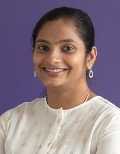
Rajalakshmi Nandakumar
Cornell University, USA

K P Naveen
IIT Tirupati, India
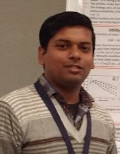
Rohit Verma
University of Cambridge, Cambridge, UK
